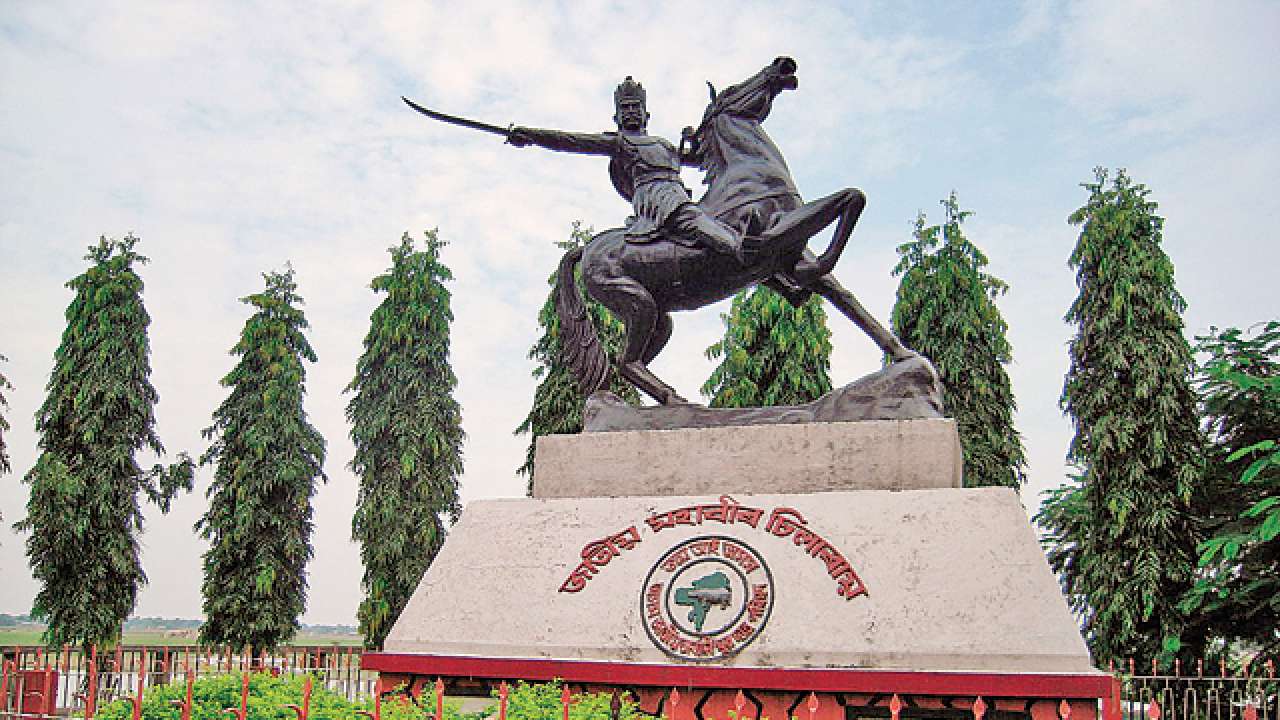
When in Guwahati some years back, I happened to spot a statue near the river bank. It was a statue of a warrior on a horse, sword drawn, looking towards the Brahmaputra with steely determination. From afar, I reckoned it to be of Lachit Barphukan, the Assamese general who had decisively defeated the Mughals. But this statue was of someone else’s — a person named Sukhladhwaj or, to go by the epithet, ‘Chilarai’ (swift as a kite). Who was he indeed, I wondered! On reading up about him I found out that he was a 16th century Koch warrior, whose importance in Northeast India’s history cannot be overstated. More important were his contributions in the fields of culture and religion.
The kingdom of Koch Behar was situated in the northern regions of modern-day Bengal. It lives on in the modern name of ‘Cooch Behar’. In the 16th century, it was ruled by Nar Narayan, with his armies being led by his younger brother — Sukhladhwaj. The political challenges were many. To the east lay the Ahom kingdom, of which the Koches were vassals, and to the south lay Bengal, ruled by Afghan sultans.
Sukhladhwaj created an efficient military machine by systematically raising a trained army. He constituted the soldiers into infantry, cavalry as well as divisions headed by war elephants and boats. The numbers of soldiers were fixed and landholdings allotted as payments. Then he embarked on an expedition against the Ahoms, and launched a struggle for the supremacy of the Brahmaputra valley. It would last four years, and ended with the whole of today’s Northeast India agreeing to the allegiance or vassalage of Nar Narayan. It was during this expedition, against the Ahoms of Assam, that Sukhladhwaj earned the epithet Chilarai or ‘swift as a kite’. The Koch soldiers occupied the Brahmaputra valley, including the Ahom capital of Garhgaon, and then proceeded against the Raja of Manipur who quickly accepted vassalage. Next, they turned on Tripura, which was annexed when the king fell fighting. Sylhet and Dimarua were captured as well as Jaintia and Kachar. But the king of Koch Bihar did not summarily end these dynasties, but continued with them after extracting promises of vassalage and tribute.
Chilarai also turned his attention towards upholding of religion and culture. He rebuilt the Kamakhya temple at Guwahati, which had been destroyed in a Muslim invasion. The temple of Kamakhya is an important Shakti Peetha, attracting lakhs of devotees each year. Later on, his son Raghu Deb rebuilt the similarly destroyed temple at Hajo in Assam.
Chilarai also gave refuge to sant Shrimant Shankardeva, who would go on to become one of the most well known Vaishnavite sants of not just Assam, but the entire country. But at the time of Chilarai, Shankardeva was facing trouble from a section of the priestly class in Assam. Chilarai brought him to Koch Bihar, where his elder brother and king of the Koches Nar Narayan gave him protection and patronage. Land was granted in Madhupur to develop a satra. These satras were similar to maths or monasteries. Shankardeva composed many works such as Sita Swayamvar, Krishna Mod Bhagvat, Krishna Gunabali etc under the patronisation of the Koch king. Vaishnavite influence grew greatly in Koch Bihar, and even the appellation ‘Narayan’ is an effect of the same.
In due course of time, Nar Narayan recognised Chilarai as a ruler of the northern banks of the Brahmaputra. It is on this bank that the majestic statue is seen, gazing south. A temple was also built by him here during the course of his campaign. But disaster struck the kingdom when the Afghan sultan of Bengal attacked, with the powerful general Kalapahar leading his armies. Chilarai was unfortunately captured by the Afghan Sultan Suleiman Kararani. He somehow managed for his release by curing the Nawab’s mother of an ailment.
A few years later Akbar attacked Bengal and Koch Bihar allied with him in this invasion! Chilarai led the forces, and the ensuing battles finished the Afghan Sultan’s rule over Bengal. Unfortunately, around this time he died of smallpox on the banks of the Ganges.
The writer is the author of Brahmaputra : The Story of Lachit Borphukan and Sahyadris to Hindukush : Maratha Conquest of Lahore and Attock